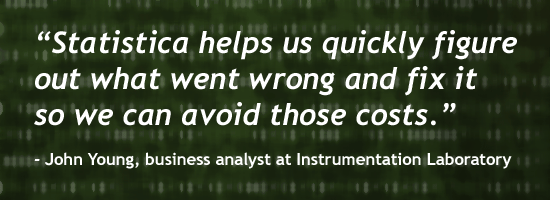Deriving value from big data is getting a lot easier, thanks to the continuing breakdown of both technologic and economic barriers. Many people would have you think that big data is a new concept, when, in fact, big data has been around a lot longer than most people think. It just used to take a federal grant to do anything with it.
Now, however, technology has evolved to where it’s possible to analyze data at the speed of business more economically than ever before. This opens doors of innovation to a much broader swath of organizations that can use information to drive their businesses forward—faster, further and more competitively.
But to cross the finish line, you need to answer the following questions:
- How can I transform my business using data, especially information I couldn’t address in the past?
- How can I do better, smarter things with data while driving operational efficiencies?
- How do I align technical and business people to fully utilize data and take our business to the next level?
When I first got into this business, it was enough to figure out how many widgets were sold in a particular region. Now, companies want to know how many widgets were sold in a particular region, in a certain color, to a specific customer, 10 minutes ago. Or, even better, they want to be able to predict the result before it happens. This takes a different approach to information—one that requires IT and business people to be in lockstep before opening the data floodgates. As the saying goes, it takes a village.
The extra effort to align is well worth it, however, as great things can happen when business and IT leaders are on the same page. At Information Laboratory, a leader in the development, manufacturing and distribution of medical devices, getting there meant giving research scientists and engineers ready access to a wealth of production test data. It also meant that both groups needed the ability to perform analyses of manufacturing, quality control and supply chain information to drive better quality and product innovation.
With Dell Statistica, analysts throughout the company can help themselves without IT intervention. As a result, Information Laboratory has taken advantage of its organizational intelligence to streamline and improve manufacturing operations. They’ve accomplished this by quickly identifying and fixing any problems associated with producing hundreds of thousands of device cartridges containing a card with a variety of measurement sensors. The bottom line: Information Laboratory has saved hundreds of thousands of dollars by avoiding the need to scrap a single batch of sensor cards.
Without technology, cost and organizational barriers, companies can drive innovation and deliver collective intelligence to those who need it most. This will be key to achieving success in a data-driven Internet of Things (IoT) world. Despite what some pundits say, IoT is not a new trend, as machines have been pumping out data for a really long time. Companies like Information Laboratory and others in healthcare, manufacturing, and automotive have been working with sensor-generated data for years. What’s new is the level of connectivity between data sources and the availability of cost-effective technologies and analytics tools that enable companies to do more with their data.
And, the more you can do with data, the better positioned you are to handle the massive scale required to integrate sensor-generated information with other digital data. Companies will demand the agility to execute analytics, as well as manage and secure it at the edge near the sensor as well as at the core of the IoT/data environment.
Think about the improvements in healthcare decisions if patients can work more directly with their physicians to fill in information gaps. They can infuse EMR data with self-generated information from their fitness wearables and data gathered at home, such as exercise levels, walking heart rate, recent glucose readings, etc. Doctors can blend that information with vitals data gathered during office visits. Applying industry best practices to the EMR data enables physicians to offer personalized, more effective recommendations designed to improve patient outcomes.
While the healthcare industry offers plentiful examples, any company that breaks down barriers can achieve measurable big data benefits. One major advantage at these organizations: No one is afraid of their data. Also, IT isn’t always the center of innovation as key business stakeholders—from sales, marketing, finance and customer support—are funding major projects.
If you can marry your big data, regardless of where and how it’s generated, with crucial business processes, you’ll win. What’s your strategy for breaking down barriers and opening doors of innovation? Connect with me on Twitter at @shawnrog to share your story.

